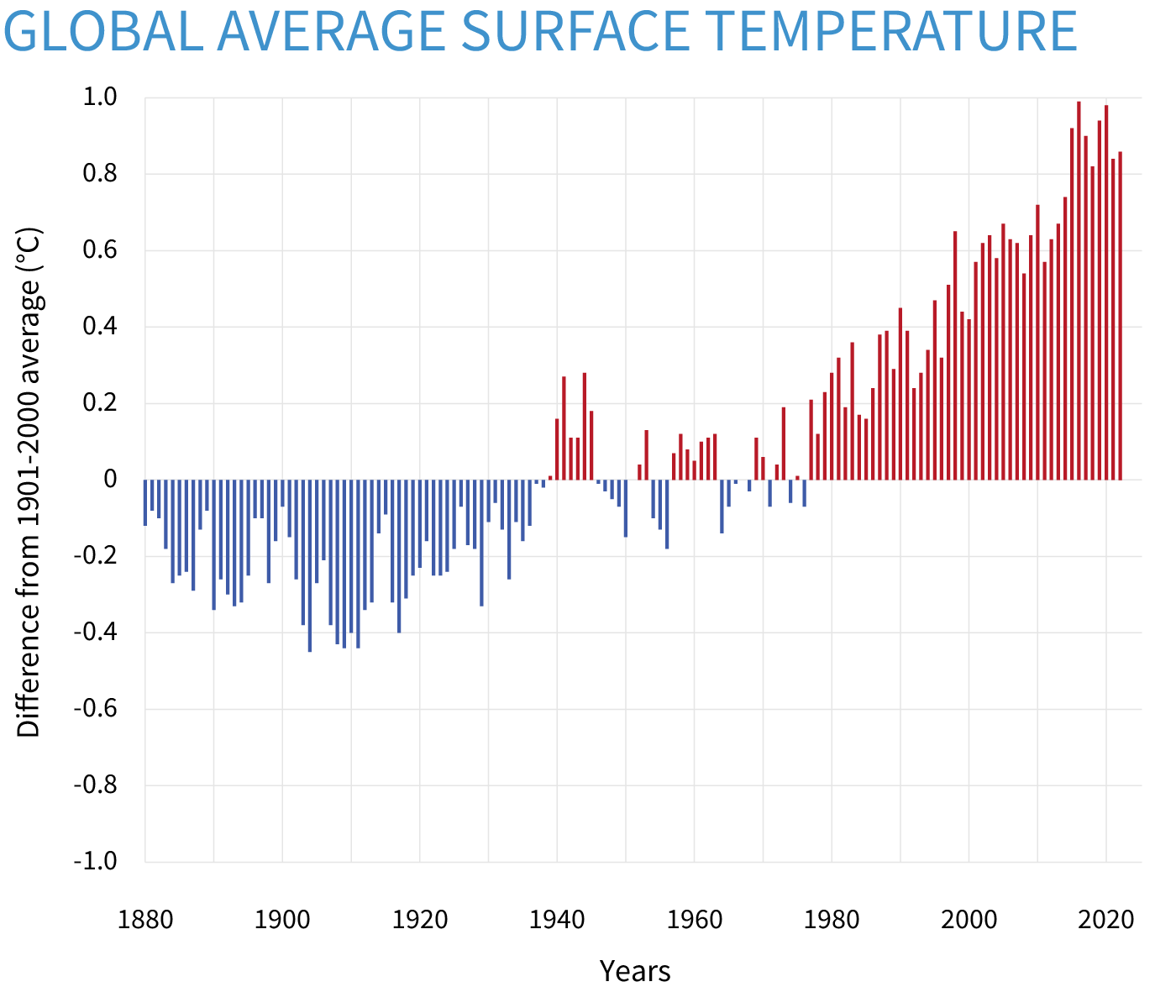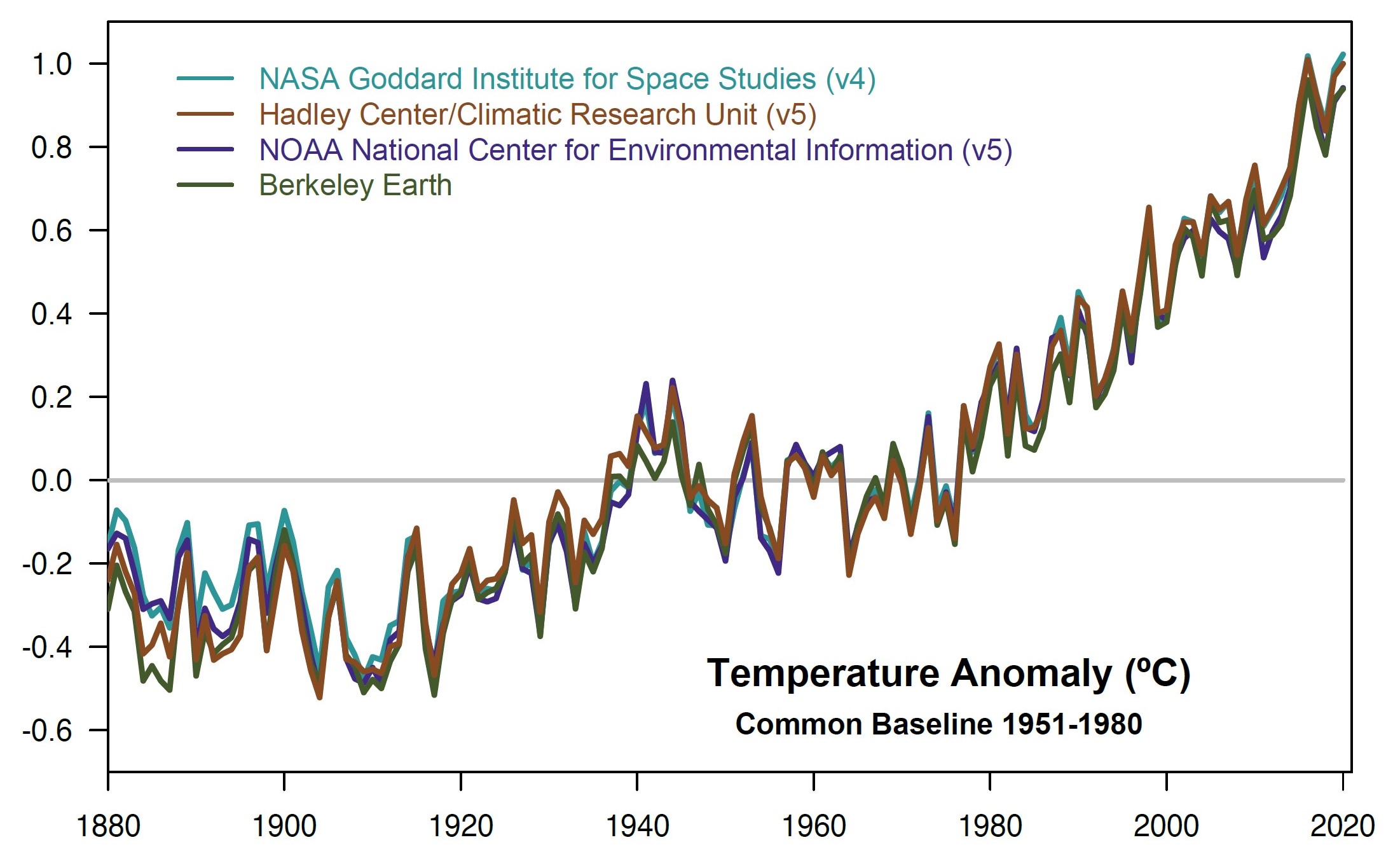Here is the obvious El-Nino jumps that warms the atmosphere:
Figure 8
A number of things are very obvious in the time-series graph of the Atlantic, Indian and West Pacific sea surface temperature anomalies, Figure 8:
First, the sea surface temperatures for the Atlantic, Indian and West Pacific Oceans warmed in upward steps or shifts in responses to the 1986/87/88, the 1997/98 and the 2009/10 El Niño events.
Second, there is little warming before, between or after those upward shifts. The horizontal blue lines, which represent the period-average temperatures between the strong El Niños, help to highlight the absence of warming during those periods. Dr. Trenberth presented similar horizontal dashed lines in his graph of global surface temperature anomalies. Note: The dip and rebound starting in 1991 is the response to the explosive volcanic eruption of Mount Pinatubo. And as noted earlier, the response to the 1982/83 El Niño was counteracted by the eruption of El Chichon in 1982. As a result, there is only a minor shift in the sea surface temperatures in response to the 1982/83 El Niño.
Third, the sea surface temperatures of the Atlantic, Indian and West Pacific Oceans do not cool proportionally during the La Niña events that followed those strong El Niños. Refer again to the sea surface temperature data for the East Pacific, Figure 7, which does cool proportionally. Those were pretty strong La Niñas that followed the 1986/87/88 and 1997/98 El Niños, yet the Atlantic, Indian and West Pacific sea surface temperature data hardly acknowledge them. And there are very basic reasons why they don’t cool proportionally during those La Niñas.
Fourth, without those strong El Niño events, there would obviously have been little to no warming of the sea surface temperatures of the Atlantic, Indian and West Pacific Oceans, and, in turn, there would have been little to no warming in Dr. Trenberth’s graph of global land-plus-sea surface temperatures, because the “big jumps” would be gone.
Fifth, or to look at it another way, if the sea surface temperatures of the Atlantic, Indian and West Pacific oceans had cooled proportionally during the La Niña events that followed the strong El Niños, the data would be similar to that of the East Pacific, and the sea surface temperatures in the East Pacific haven’t warmed in 31-plus years.
More detail on Figure 8: The periods highlighted in red correspond to the official months of the 1986/87/88, the 1997/98 and the 2009/10 El Niño events as presented by NOAA in their
Oceanic NINO Index, but the periods have been lagged 6 months to account for the response time of the sea surface temperatures in the Atlantic, Indian and West Pacific Oceans to the El Niños.
LINK
=====
It is
El-Nino's NOT CO2 that is causing the warming in the atmosphere. Been obvious for decades too but warmist/alarmists have fallen for the CO2 did it nonsense.






